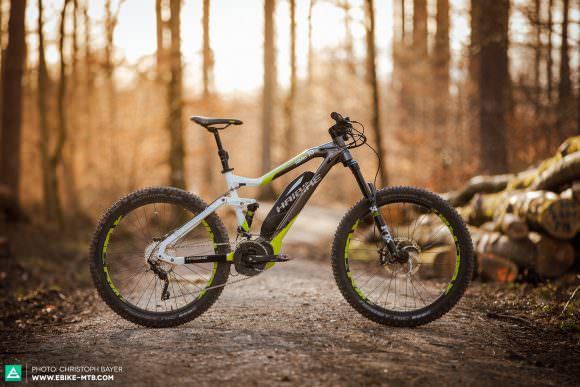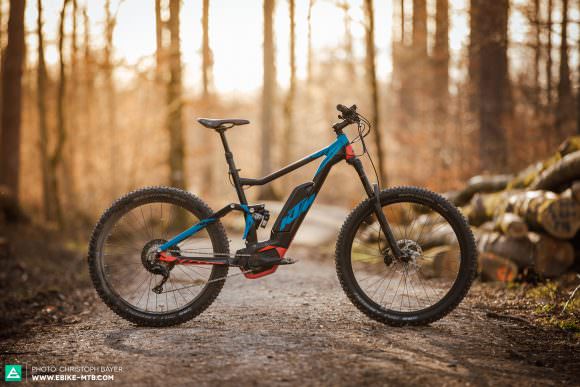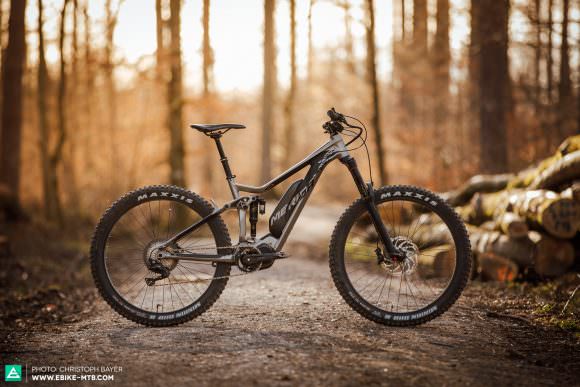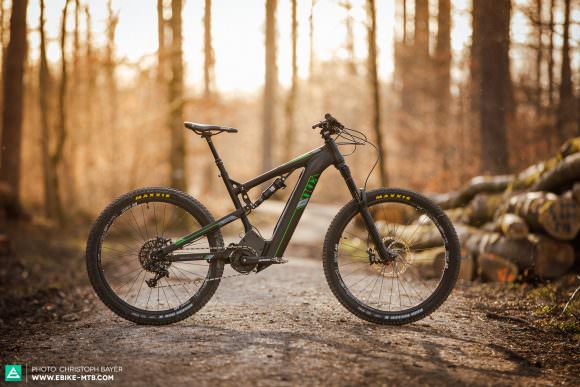They say that you cannot put a price on fun, so do we always need to break the bank to have great performance? We tested 11 E-Mountainbikes under € 5,000, and discovered not all bikes are created equal… Find out which bikes made us want to play all day and which ones left us disappointed.
Firstly a couple of questions: How much performance and technology can we expect from a bike under € 5,000? And is spending more money really necessary? We all know: as customers we want a clear and easy insight into the market, while salesmen seek straight-forward selling-points to drive home a sale. The value of a bike has long been determined by easily-recognisable components – functionally important parts which aren’t visible are harder to “sell”. Which once was the ‘eye candy’ group set, is now the high-output Bosch Performance CX-motor. But what really distinguishes a good E-Mountainbike? Is it a powerful motor? Is it high end components? Or is it a stiff frame?
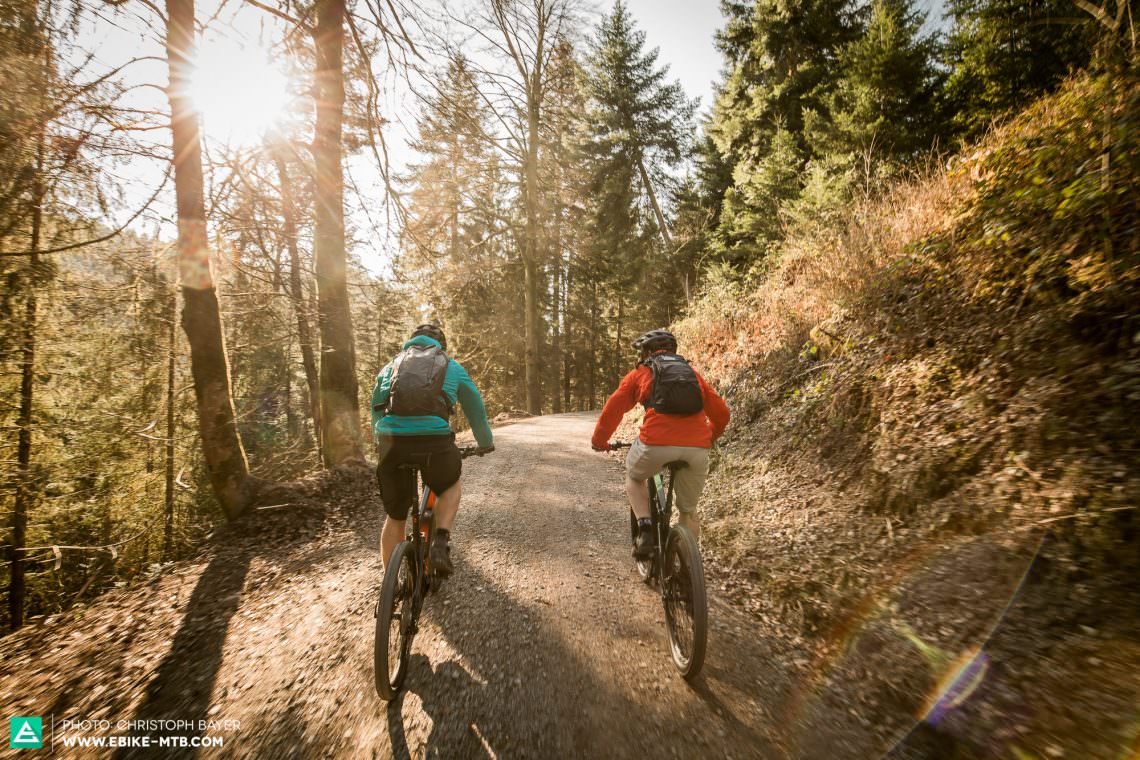
Toughly calculated
A good bike – whether a road bike or E-Mountainbike should always present an overall concept in tune with its application. The job of a manufacturer is not only to build a top frame, but also to provide customers with an optimised package for their specific price range. Of course the easiest option would be to always opt for top components, but that would make all bikes prohibitively expensive. On paper, a cheaper price is always directly linked to compromises. The art in the bike-configuration process consists of making this compromise as inconspicuous as possible on the trail. A fancy derailleur might make a great difference in the showroom, but doesn’t add much performance on the trail. Grippy tires, a good, solid chassis and a decent set of brakes on the other hand are crucial for an enjoyable ride. CENTURION E-NoPogo, Giant Full-E+0, MERIDA eONE SIXTY 800 and SCOTT E-Genius 720 Plus offer some very well-conceived packages.
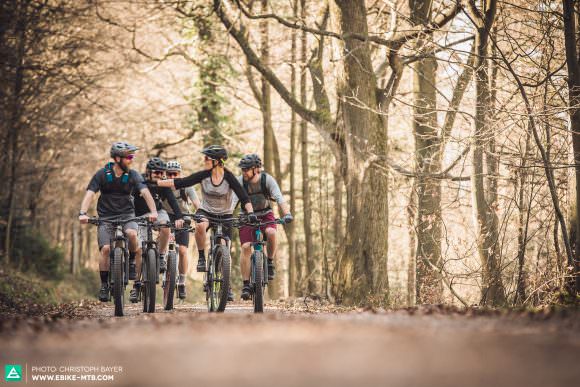

Unfortunately, not all bikes come in a great package, highlighting how small details can limit the riding-fun factor massively. In some cases, you could bet that the components have been calculated and added by clicking through an Excel spread-sheet, but have never really been put to the test for everyday practicality. For example, the long stem on the KTM MACINA Kapoho totally ruins its downhill handling qualities. The absence of a seat dropper on the Specialized Turbo Levo, is definitely a way of saving pennies, but for a bike that promotes trail-fun, a seat-dropper is an absolute must. The front derailleur on the Haibike SDURO 2by drivetrain always fails to work exactly when you need it most: under maximum stress on steep climbs.
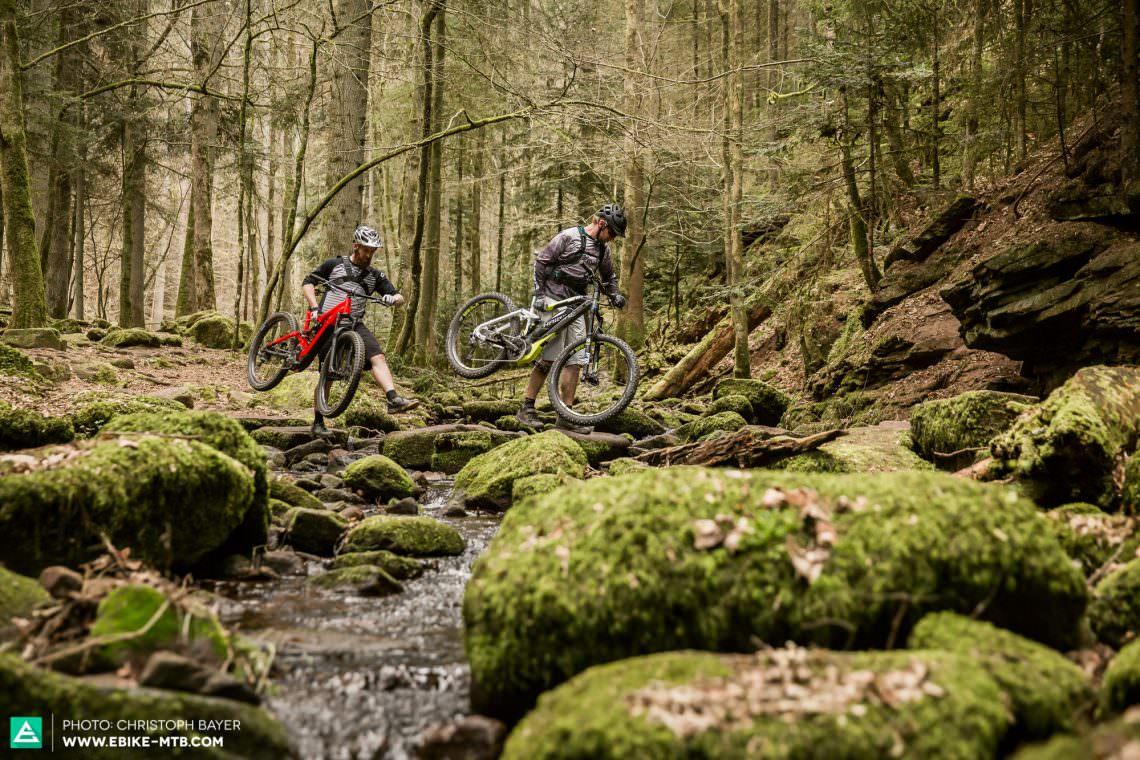
Test criteria: Specs, stiffness, range, wheel size – what makes the difference?
What is the real value of a bike which comes with the best components, the biggest range and the stiffest frame, but still feels shit on the trails? Pardon my French. But real, practical ride feel is far more important than adding theoretical criteria in order to reach a final result: user-friendliness and factors such as balance, riding safety and an overall-concept are the key (key-word Smart Simplicity) . Because a bike is more than the sum of its parts. And even the best bike is only as good as the way it’s set up. Laboratory tests are invaluable for providing important insights for industrial quality assurance– but giving a true statement about actual handling and riding quality is impossible from inside the walls of a sterile white lab.
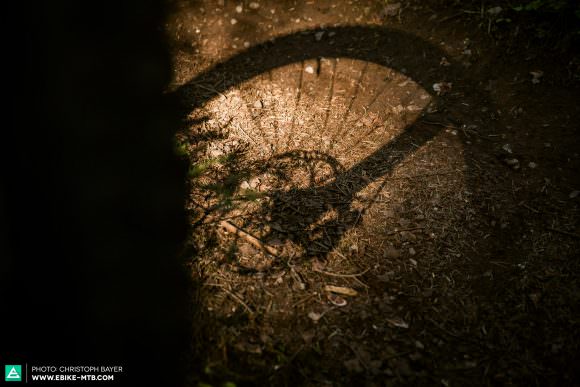

Who are we testing the bikes for in this test?
When evaluating bikes, we refuse to use theoretical ideal-conditions as a starting point. We are fully aware of the real requirements and the fact that E-Mountainbikes appeal to an extremely broad range of users. From absolute beginners to seasoned mountain bike gurus. Our latest reader-survey has showed that around 60 % of our readers ride their bikes mainly on fire roads and forest paths. Still, we believe that E-mountainbikes, especially the ones with longer travel, should prove their qualities on more challenging terrains too.
A bike that performs outstandingly on singletrack will also perform well on gravel paths, offering in both situations considerably higher safety standards, stability and more confidence than just a bike that works fine on gravel paths but hits its limits when faced with obstacles. At the end of the day even a curb-side or a pothole on a gravel path count as obstacles, which an E-mountainbike with a great trail performance can easily deal with, offering a higher safety feeling– a decisive difference between a crash and a bailout. In our evaluation criteria, vert-riding or similar up-hill scenarios are irrelevant to us, as this is a very restricted niche and only applies to a handful of riders. The general rule is: with each conclusion we will give you a clear recommendation, as to which type of rider and purpose the bike is suitable for, and those it is not.


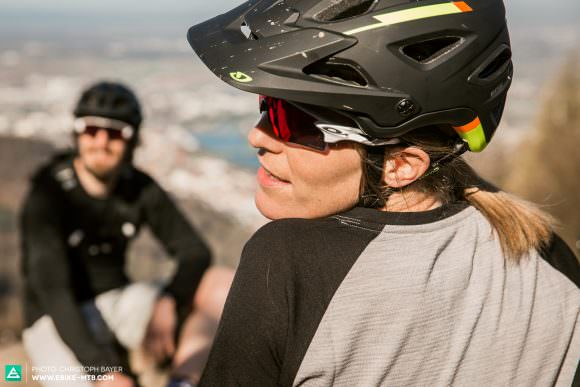
The bikes on test
| Bike | Price | Weight | Motor | Battery |
|---|---|---|---|---|
| Bergamont E-Trailster 8.0 | € 4,499 | 21.95 kg | BOSCH | 500 Wh |
| CENTURION No Pogo E2000 27+ | € 4,999 | 23.30 kg | BOSCH | 500 Wh |
| FOCUS JAM² 29 | € 4,499 | 22.09 kg | SHIMANO | 386 Wh |
| Giant Full-E+0 Pro | € 4,999 | 22.21 kg | Yamaha | 500 Wh |
| Haibike SDURO AllMtn 7.0 | € 4,299 | 23.13 kg | Yamaha | 500 Wh |
| KTM MACINA Kapoho LT 273 | € 4,599 | 23.12 kg | BOSCH | 500 Wh |
| MERIDA eONE-SIXTY 800 | € 4,199 | 22.32 kg | SHIMANO | 504 Wh |
| NOX Bike EDT 5.1 Hybrid | € 4,799 | 21.65 kg | Brose | 580 Wh |
| SCOTT E-Genius 720 Plus | € 4,499 | 22.66 kg | BOSCH | 500 Wh |
| Specialized Turbo Levo FSR 6FATTIE | € 4,099 | 22.39 kg | Brose | 460 Wh |
| Trek Powerfly 8 FS | € 4,999 | 22.99 kg | BOSCH | 500 Wh |

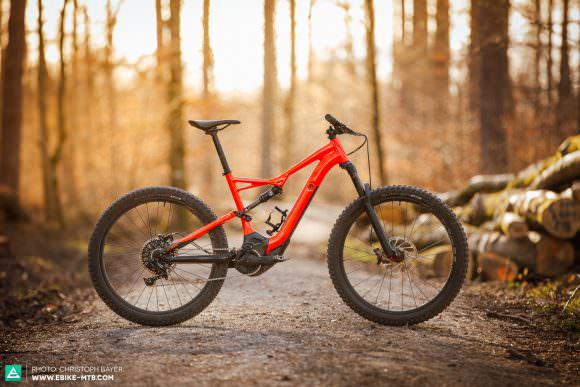
Tops & Flops
Often small details can make a huge difference: seamless integration, first-class ergonomics and carefully selected parts. Easier said than done – here are some of the tops and flops from this grouptest.
Tops

The App-controlled system on the Specialized Turbo Levo is still unique. Not only is it capable of controlling the characteristic of the motor, but also includes a real-time navigation system based on the remaining range. You can also track your rides with it.
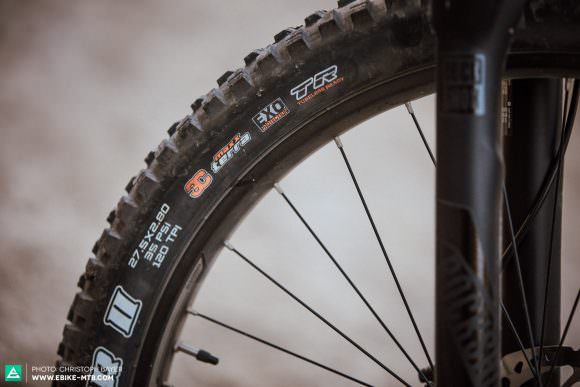
The MAXXIS Minion DHR II is currently the best E-Mountainbike Plus tire for E-Mountainbikes. It offers a huge amount of traction, has a high resistance to punctures and rolls very nicely.
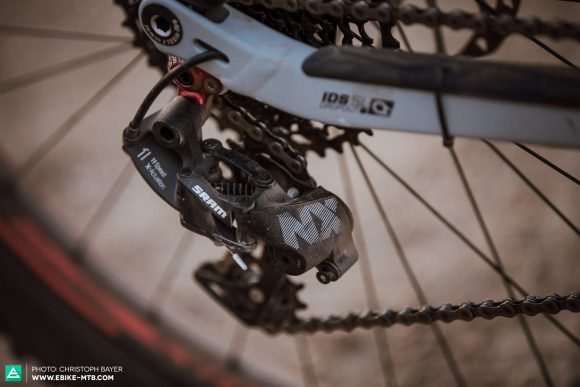
On E-Mountainbikes, the drive system is subject to a huge amount of force and wear. Even though the SRAM NX-gear-group comes at a low price, it works incredibly well, saving bags of money which can be cleverly re-invested in other components.
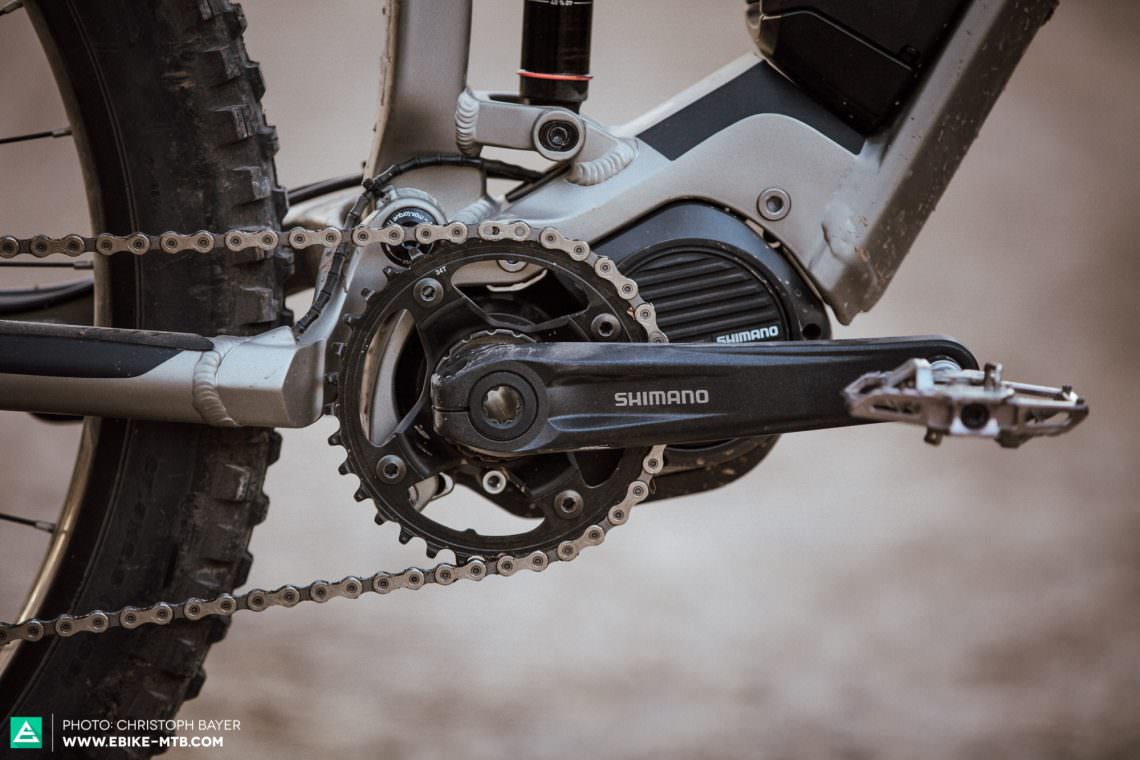
The Shimano STEPS M8000 is the most powerful motor on the market. It can transfer an enormous amount of power very smoothly and thanks to a compact design it allows manufacturers to design optimal frame geometries around it.
Flops
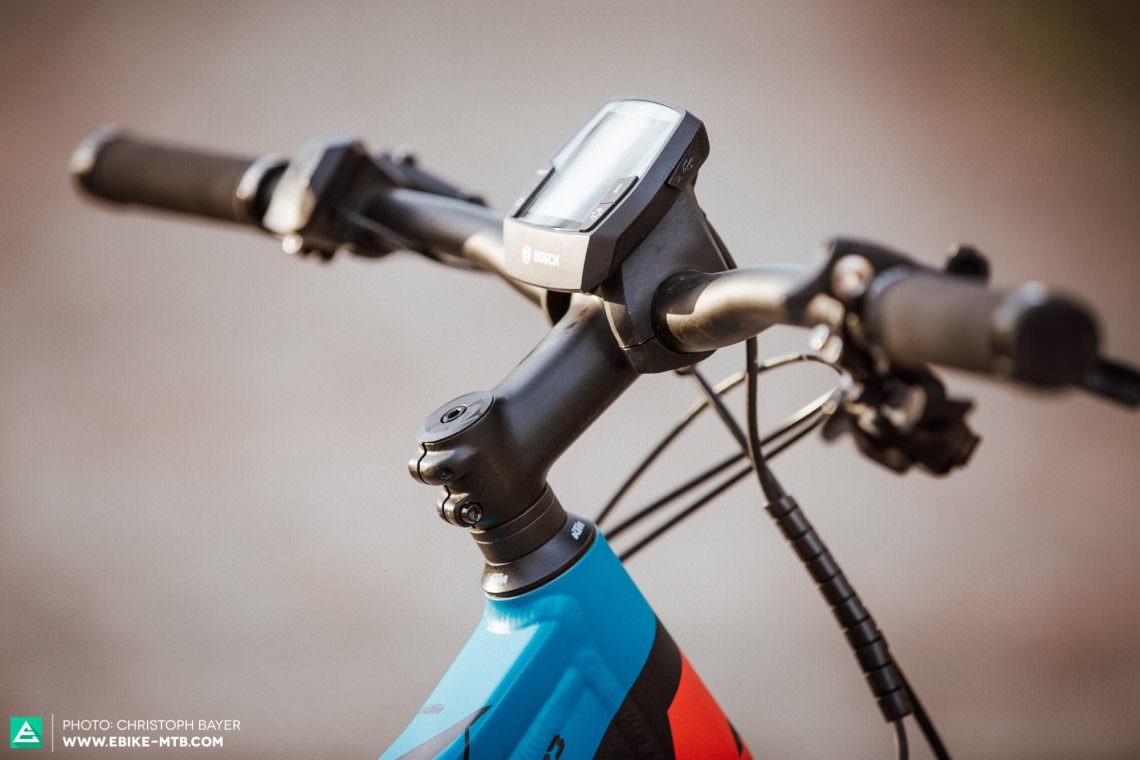
The 90 mm stem on the KTM is one massively long stem. This translates in indirect and sloppy handling. We recommend a version with a 60 mm stem.

thin 27.5″ tires clearly offer less grip than their chubbier 27.5+ cousins. Bergamont uses narrow rims and a flat profiled tire which ends with a lack of grip and comfort.

The Haibike’s two-speed drive system always seems to stop working exactly when we need it most: on steep climbs. Constant load through the drive system prevents the chain from jumping from the large to the small chainring.
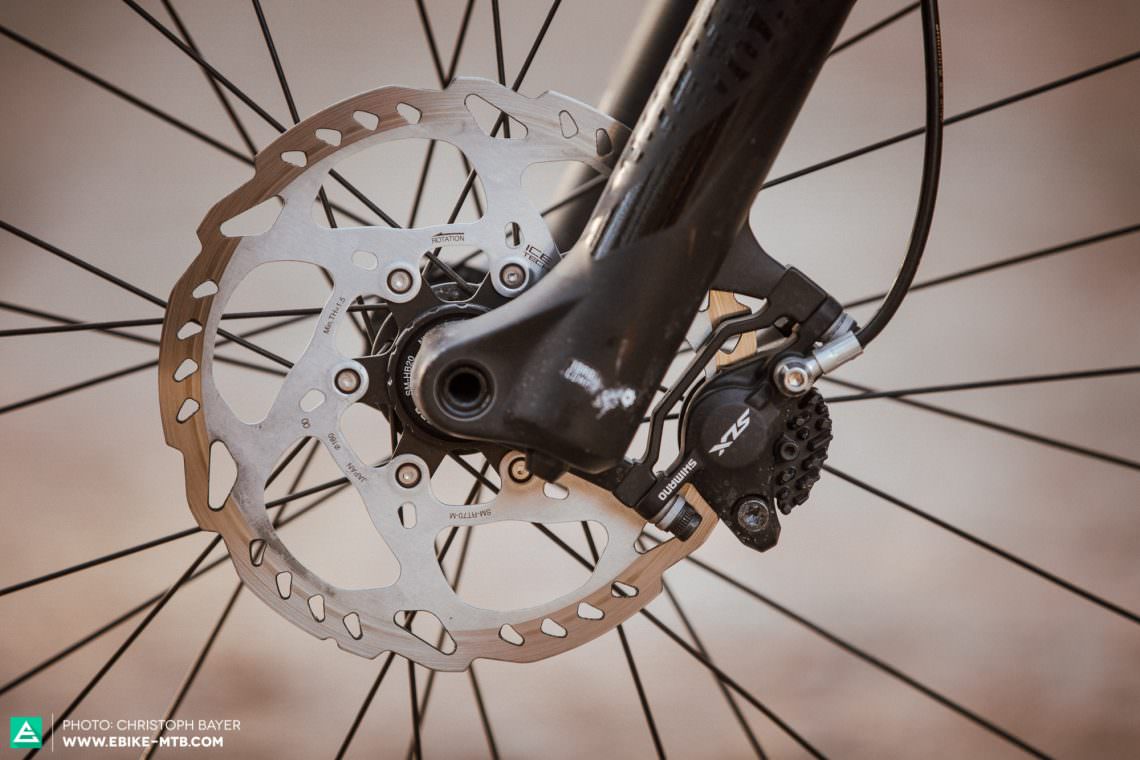
Efficient brakes are crucial, especially on long alpine descents. That’s why we would like to see a 200 mm brake disc upfront on the KTM, in order to secure a confident and consistent deceleration.



Your bike is only as good as the software within.
Not one single day goes by without one of our electronic devices requiring an update – E-Mountainbikes are no exception. Manufacturers are constantly working to improve their systems. Bosch has recently presented a revised Sports Mode (now eMTB-Mode), ROTWILD (not in this test) has now integrated a fourth level of power assistance into their Brose-drive system and the Specialized Team has optimised their motor’s power output. If you want top performance, you need to update your systems regularly.


Are Plus tires the ultimate thing?
More grip, more comfort, enhanced safety – there is really no reason not to want Plus tires on your E-Mountainbike. It’s no surprise that 8 out of 11 manufacturers choose 2.8″ tires for their bikes. The only exception being the Bergamont E-Trailstar and NOX EDT 5.1 with classic 27.5″ wheels and the FOCUS JAM², which features big 29er wheels. The FOCUS manages to convince with very good rolling properties and is an interesting option for long-distance riders. Not so for the the narrow 27.5″ tire models, which lack authority when used in a E-Mountainbike context.
 [/emaillocker]
[/emaillocker]
The motor – a very important criterion, but above all a matter of taste.
Thanks to different geometries, chassis and different specs even classic mountain bikes possess different personalities. In the case of E-Mountainbikes this character is additionally underlined by power-drive-technology. The Specialized Levo for example is a top bike for those who love a very natural riding-feel and still enjoy riding with their “unplugged-friends”. The Haibike SDURO AllMtn on the other hand is the ideal option for riders who seek a high level of comfort, prefer riding on easier trails and rely on a higher level of support. In the following individual tests we will reveal in detail which bike matches which type of rider, and, of course reveal the one clear winner!
The best E-Mountainbikes for under € 5,000
Let’s go back to our opening question, does it always have to be high end? The answer is, of course, no! As in the high-end-E-mountainbike-comparison test in issue #009, again, MERIDA deserves the coveted test victory –this time with the eONE-SIXTY 800. The bike excels with outstanding performance and with an impressive price tag of € 4,199. With confident and refined handling as well as up-to-the-minute desirable equipment, this is the perfect bike for all those who won’t compromise when it comes to their E-Mountainbike. On top of that, its performance is nearly a match for the € 1,400 more expensive eONE-SIXTY 900E version. We are delighted!
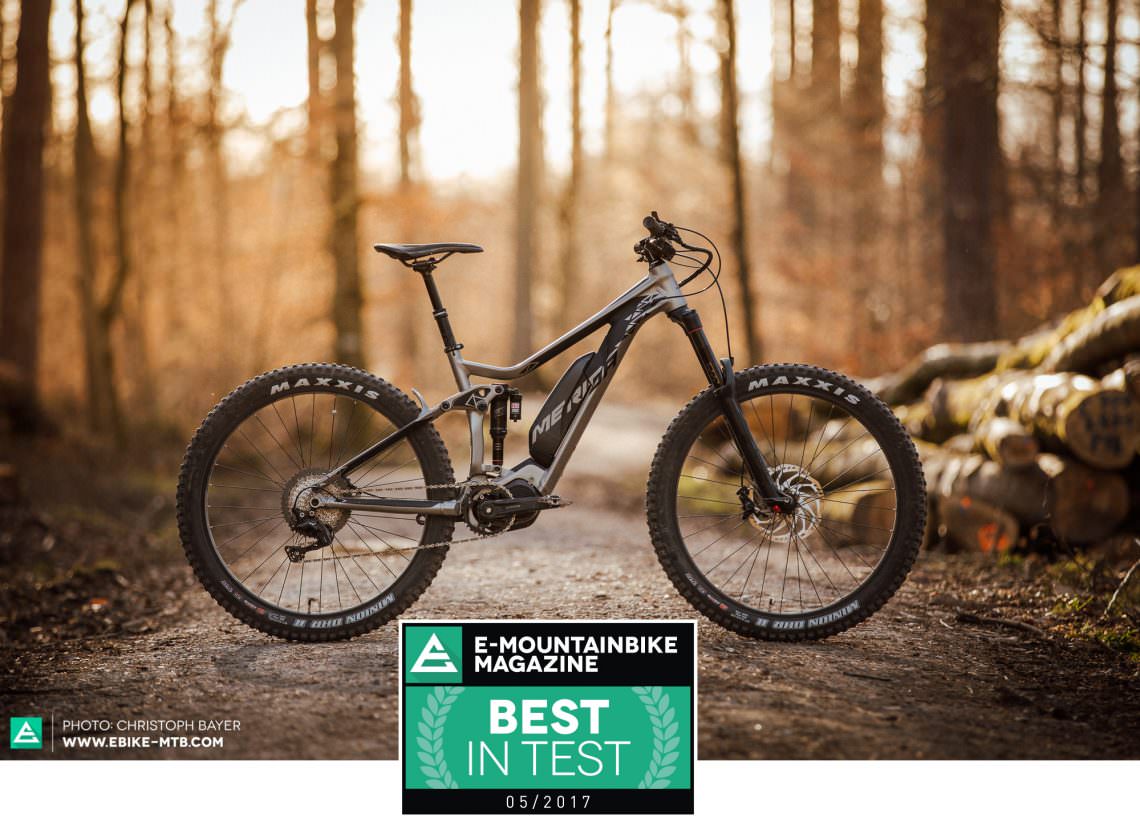
On the other hand, riders who’d rather opt for a very comfortable sitting position, an extremely responsive chassis and a powerful motor, will fall in love with the Giant Full-E+0 and its brand new Sync Drive Pro, based on the Yamaha Sync Drive PW-X-drive technology.
The SCOTT E-Genius has already become a modern day classic and has impressed in previous tests – the top of the range version won the comparison test in issue #008. Having said that, at the time it didn’t have the competition from FOCUS and MERIDA. But even the mid-range E-Genius 720 Plus-version proves that Team SCOTT knows what E-Mountainbikes are all about. No other bike offers more balanced handling. Coupled with the proven Bosch Performance CX-drive and more affordable but technically perfect components, this results in a true carefree bike for every type of rider. Definitely a buying-recommendation.
All bikes in test: Bergamont E-Trailster 8.0 | CENTURION No Pogo E2000 27+ | FOCUS JAM² 29 | Giant Full-E+0 Pro | Haibike SDURO AllMtn 7.0 | KTM MACINA Kapoho LT 273 | MERIDA eONE-SIXTY 800 | NOX Bike EDT 5.1 Hybrid | SCOTT E-Genius 720 Plus | Specialized Turbo Levo FSR 6FATTIE | Trek Powerfly 8 FS
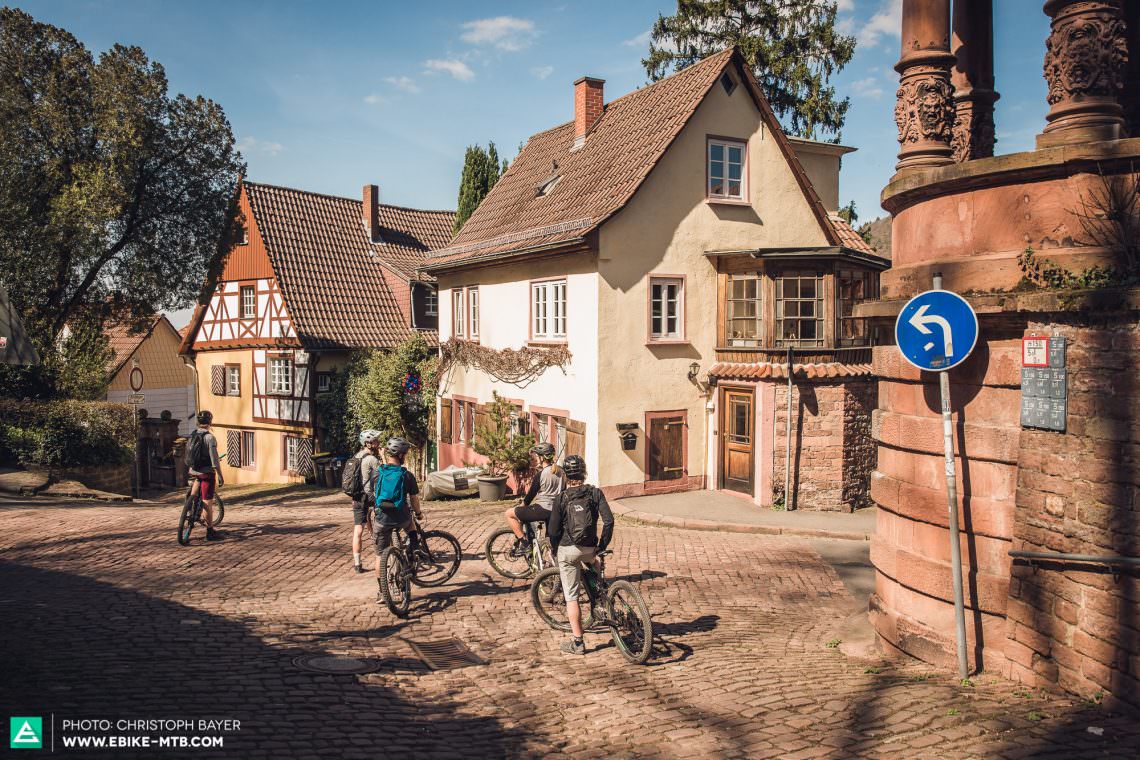
Did you enjoy this article? If so, we would be stoked if you decide to support us with a monthly contribution. By becoming a supporter of E-MOUNTAINBIKE, you will help secure a sustainable future for high-quality cycling journalism. Click here to learn more.
Words: Christoph Bayer, Robin Schmitt Photos: Christoph Bayer








